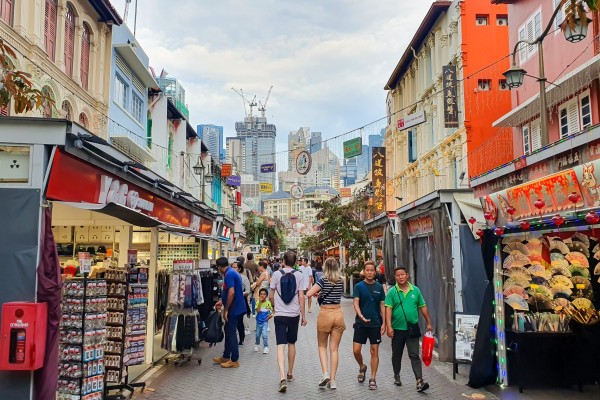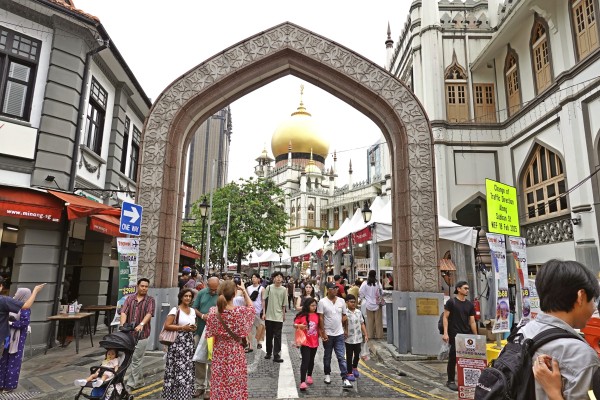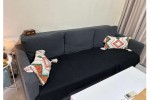The Merlion: What Does It Mean to Singapore Then and Now?


Before moving here , have you ever received a Merlion-themed souvenir from a friend who had visited Singapore in his or her travels and wondered at the half-fish half-lion likeness of the creature?
Perhaps you’ve savoured a delicious Merlion-shaped chocolate in a box of chocolates, received a mug or T-shirt with the Merlion’s likeness splashed across loudly and proudly, or even visited the water-spouting Merlion statue at Merlion Park.
Whatever your experience with the unique creature, it’s doubtless that it has come to represent Singapore and all she stands for, to tourists and foreign visitors.
Now that you’re here for the longer-haul and in the midst of settling in nicely, you may be interested to know how the Merlion came about, its origins, symbolism, what it means to Singaporeans today, and even some fun facts about it.
Origins of the Merlion
The regal Merlion does not have a sweeping historical mythological origin story, although it is extremely rich in symbolism–as you’re about to find out.
Instead, it was born out of a very practical need for a logo for Singapore’s Tourism Board (STB) in 1964, and was actually the tourism board’s official logo for more than 30 years. The Merlion was also used as a national icon, to promote Singapore as a tourist destination.
As for who created the Merlion, it was a British ichthyologist named Alec Fraser-Brunner, who was also the curator of the now-defunct Van Kleef Aquarium. He was known for his work with marine life and his keen creative eye, as evidenced by his work at the aquarium.
Symbolism of the Merlion
Fraser-Brunner’s choice in designing the Merlion to have the head of a lion and the body of a fish was definitely no coincidence.
Both pay homage to facets of Singapore’s history: the lion’s head is a reference to the legend of Singapore’s founding in the Malay Annals, when Sang Nila Utama spotted a lion at the mouth of the Singapore River when he first arrived in Singapore; while the fish’s body calls to mind Singapore’s origins as a sleepy fishing village.
The fact that the Merlion remains a beloved unofficial national icon today is testament to its rich symbolism that has resonated with generations of Singapore residents over the years.
Modern Significance of the Merlion

The Merlion today is still largely a tourist symbol of the country, easily recognisable with its unique characteristics.
Singaporeans have also adopted the Merlion as a symbol of home, our little country that could and did. It’s often used to represent Singapore on the international stage as an instantly-recognisable form of branding, such as on sports teams, global advertising campaigns, and even in popular culture (spot the Merlion in the Crazy Rich Asians movie!)
For many overseas Singaporeans, the image of the Merlion is also a little memento of home when they’re living abroad and they spot the icon on memorabilia like mugs, keyrings, and T-shirts.
In fact, a study conducted by the Nanyang Technological University (NTU) some years back showed that Singaporeans had a similar emotional response to the Merlion as the Chinese had to the terracotta warriors of Xi’an, and Americans had to the Statue of Liberty.
Where You Can See the Merlion in Singapore

There are several places in Singapore where you can admire official statues of the Merlion in-person–six, to be exact.
But undoubtedly, the best place to see the Merlion in its full glory is at the eponymously named Merlion Park; a waterfront promenade at the bay area of Singapore overlooking the Singapore River.
There, two Merlion statues–one standing at a statuesque 8-metres with water spouting out of its mouth, the other smaller one standing beside it and affectionately named the “Merlion cub”–stand watch over the mouth of the river.
Other places you can spot the Merlion in Singapore include Mount Faber, STB’s office at Tourism Court, and a public car park at Ang Mo Kio Avenue 1.
Fun Facts About the Merlion!
-
The 8-metre tall Merlion statue was struck by lightning in 2009, causing a crack in its mane and a hole at its base. It has since been repaired.
-
There was once a 32-metre tall Merlion structure in Singapore, at Sentosa. It was a tourist attraction in itself, and even featured light beams from its eyes that delighted crowds at night. The Merlion at Sentosa was demolished in October 2019.
-
There are probably many unofficial Merlion replicas all around Singapore, see if you can find them!
-
Merlion statues can even be found in other countries, such as Indonesia, Japan, South Korea, Thailand, China, Cambodia and the United Kingdom.
-
Popular culture loves the Merlion! It has appeared in anime like Cowboy Bebop and Karas, cartoons like We Bare Bears and Phinneas and Ferb, in video games like Animal Crossing and Mario Kart, and in movies like Crazy Rich Asians.
-
A Singlish term for severe vomiting is “to merlion”, referring to the unending gushing of water from the Merlion’s mouth.
STB currently holds the rights to the image of the Merlion. There are pretty strict rules restricting its use in certain circumstances, so you’ll want to read that here if you were thinking of incorporating the catchy mascot in any of your commercial endeavours to show your love for Singapore.
What do our customers say?

































